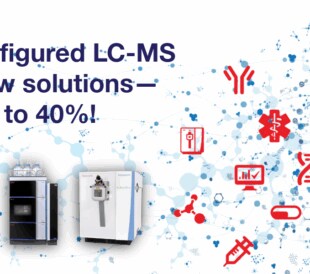When I think about what it takes to keep a high-performing MS laboratory running—especially those dealing with tight timelines, strict regulations, and ever-expanding datasets—I’m reminded that the software we rely on isn’t just a tool. It’s the backbone of our workflows, our decisions, and ultimately, our results.
Whether you’re in pharma, environmental testing, or food safety, managing the complexity of targeted mass spectrometry workflows while maintaining accuracy, compliance, and efficiency requires a lot of work.
That’s where a purpose-built solution makes a difference. I’ve worked closely with labs that are navigating these challenges—and from the many conversations and experiences, I put together five main capabilities you should look for in your software when it comes to targeted MS quantitation:
1. Simplified data and workflow management
Too many labs are still relying on disconnected systems or folder-based setups that can lead to inconsistent methods and reports. When utilizing modern software solutions, everything—methods, templates, data, reports—can be centrally managed, reducing errors and training time while ensuring everyone is working from the same validated workflows.
It’s a big plus if the software also supports multi-consensus reporting, making it easy to compare results across sequences and analyses for greater confidence in the data. By packaging complete workflows and setting predefined views, labs can streamline routine operations and ensure method repeatability, so anyone can run the analysis reliably and consistently.
2. Controlled access in and out of the lab
Many labs are still tied to legacy setups that make remote work challenging. Researchers often rely on standalone workstations that store data locally, making it hard to access critical results when off-site. Transferring data via USB drives or external hard disks not only adds inefficiency, but it can also raise serious security concerns. These outdated practices slow down collaboration and increase the risk of data loss or breaches.
Hybrid work is here to stay. With the ability to control and access instruments and data, users can securely set up runs, review results, and manage workflows from anywhere. You’re no longer tied to a specific bench, workstation, or even building. Productivity doesn’t have to stop when you step out of the lab.
“Managing all our instruments and work with data remotely via a centralized server means we don’t need to be in the laboratory to access our data.” – Dr. Kayleigh Arthur, Owlstone Medical Ltd.
3. It’s built for MS workflows
Whether you’re running triple quads, high-res accurate mass, or both—life’s much easier when working with software solutions that give you native instrument control and deep integration for targeted workflows. That includes support for MSⁿ, intact mass deconvolution, spectral libraries, and high-throughput quantitation.

Just as important is what happens after data acquisition. Integrated, built-in reporting capabilities—paired with customizable reporting options—should make it easy to flag results and automate the necessary calculations, all within the software. You need a powerful combination that can streamline review and ensures consistency across analyses.
4. Scalability
From small bioanalytical teams to global enterprises, can it be scaled up or down without the need for reinstallation or manual data transfer? It should be built to handle complex, multi-site deployments with ease.
Add to that network resilience, automated data protection, and centralized updates—and you’ll get a system designed to grow with your organization.

5. Stress-free compliance
Let’s face it, if you have to do it, compliance is non-negotiable, but it can be time-consuming. The system should include built-in features that support GxP, 21 CFR Part 11, and audit readiness—like audit trails, version control, and detailed user management.
The ability to query and interrogate data within the system would ensure that data integrity requirements are met, delivering full traceability, and verification of data throughout its lifecycle. Your QA team will be very pleased!
Conclusion
Managing targeted MS quantitation shouldn’t feel like assembling a puzzle with missing pieces. A modern software should bring together everything you need—scalable infrastructure, powerful MS data tools, and built-in compliance features—into one cohesive solution. It must support your science, your team, and your business goals.
If you’re ready to rethink how your lab handles MS data, this is the right time to explore what’s possible.
Join our upcoming webinar to learn about networked software for MS labs.
Visit us on LinkedIn: #targetedquantitation #compliance #massspectrometry #control



